Failed HVAC projects can cause numerous issues, from poor performance and high energy bills to discomfort for homeowners and building managers. It is essential to understand why these projects fail in order to prevent such problems and ensure optimal performance and energy efficiency.
In this article, we will explore the common HVAC installation problems that can lead to project failures. By identifying and addressing these issues, you can avoid unnecessary expenses and potential system malfunctions.
Key Takeaways:
- Improper installation of HVAC systems can result in poor performance, high energy bills, and discomfort.
- Common HVAC installation problems include incorrectly sized units, undersized ductwork, unsuitable overflow drain installation, incorrect refrigerant usage, and improper exhaust.
- Choosing a reputable HVAC contractor with certifications and experience is crucial for a successful installation project.
- Regular maintenance and monitoring are essential to ensure proper functioning of HVAC systems.
- Signs of faulty installation include water leaks, electrical issues, inadequate airflow, excessive noise, and hot and cold spots.
Common HVAC Installation Problems
Several common HVAC installation problems can lead to system inefficiencies and performance issues if not addressed properly. Understanding these problems and taking steps to avoid them is crucial for homeowners and building managers. Here are some of the most common HVAC installation mistakes:
1. Incorrectly Sized Units
One of the major mistakes in HVAC installation is using units that are incorrectly sized for the space. An undersized unit may struggle to cool or heat the area effectively, leading to poor comfort levels and high energy bills. On the other hand, an oversized unit may short cycle, constantly turning on and off, which can lead to increased wear and tear on the system. It is important to carefully calculate the required cooling or heating capacity based on the size and insulation of the space.
2. Undersized Ductwork
The ductwork in an HVAC system plays a crucial role in delivering conditioned air to different rooms. Using ducts that are too small for the system’s airflow requirements can result in restricted airflow, reduced efficiency, and uneven temperature distribution. It is essential to properly size and design the ductwork to ensure optimal system performance and comfort.
3. Unsuitable Overflow Drain Installation
Improper installation of the overflow drain can lead to water damage and system malfunctions. If the condensate drain is not installed correctly or is not properly connected to a suitable drainage system, water may leak and cause damage to the surrounding area or the HVAC equipment. Regular inspection and maintenance of the drain system are necessary to prevent these issues.
4. Incorrect Refrigerant Usage
Using incorrect refrigerant in HVAC installations can have a significant impact on system performance and longevity. Each system is designed to operate with a specific type and amount of refrigerant. Using the wrong refrigerant can lead to decreased energy efficiency, compressor failure, and overall system malfunction. It is essential to follow manufacturer guidelines and use the correct refrigerant for each system.
To ensure a successful HVAC installation, it is recommended to hire a reputable HVAC contractor with the necessary certifications and experience. Additionally, regular maintenance and monitoring of the system are crucial for identifying and addressing any issues before they escalate. By avoiding common installation mistakes and taking proactive measures, homeowners and building managers can achieve optimal HVAC system performance, energy efficiency, and comfort.
Improper Sizing of Units
One of the most common mistakes in HVAC installation projects is improper sizing of the units, which can lead to various complications down the line. When an HVAC unit is not accurately sized, it can result in inefficient heating or cooling, increased energy consumption, and poor performance. An undersized unit may struggle to reach the desired temperature, leading to discomfort and frustratingly high energy bills. On the other hand, an oversized unit may cycle on and off frequently, leading to unnecessary wear and tear on the system and reduced energy efficiency.
Proper sizing requires a careful assessment of factors such as the size of the space being conditioned, insulation levels, and the number of occupants. It is essential to consult with an experienced HVAC contractor who can accurately calculate the heating and cooling needs of your property. By ensuring the correct unit size, you can prevent future complications and enjoy optimal comfort and efficiency.
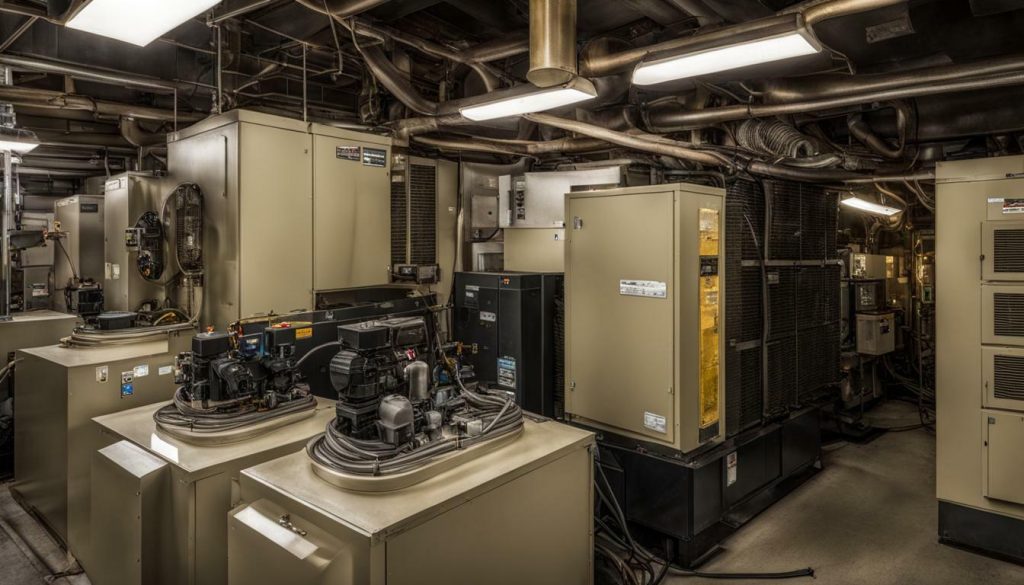
Impact of Improper Sizing
The impact of improper sizing goes beyond discomfort and high energy bills. An incorrectly sized HVAC unit may struggle to maintain a consistent temperature, resulting in hot and cold spots throughout the space. It may also lead to excessive humidity or insufficient dehumidification, causing moisture issues and compromising indoor air quality. Additionally, an improperly sized unit may experience premature wear and tear, leading to frequent breakdowns and costly repairs. Therefore, investing in professional sizing services is crucial for the long-term performance and longevity of your HVAC system.
| Common Problems of Improper Sizing | Effects |
|---|---|
| Insufficient cooling or heating | Discomfort |
| Frequent system cycling | Inefficiency and increased energy consumption |
| Poor indoor air quality | Excessive humidity or insufficient dehumidification |
| Premature wear and tear | Costly repairs and reduced system lifespan |
By avoiding the common mistake of improper sizing, you can ensure that your HVAC system operates efficiently, maintains comfortable indoor temperatures, and provides optimal air quality. Consult with a reputable HVAC contractor to have your unit accurately sized and enjoy the benefits of a properly functioning system.
Undersized Ductwork
Undersized ductwork is a prevalent issue in failed HVAC projects, as it hinders proper airflow and distribution of conditioned air throughout the building. When the ducts are too small or improperly designed, the HVAC system struggles to deliver the necessary amount of air to each room. This leads to uneven heating or cooling, discomfort, and increased energy consumption.
One common mistake is using ducts that are too small to accommodate the required airflow. Undersized ductwork creates a bottleneck, restricting the system’s ability to push the air effectively. As a result, some rooms may receive insufficient airflow, while others may receive too much. This imbalance can cause hot and cold spots, making it challenging to maintain a comfortable indoor environment.
To ensure proper airflow and distribution, it’s essential to follow HVAC project best practices. This includes accurately sizing the ductwork based on the system’s capacity and the size of the building. Consulting industry standards and guidelines can help determine the appropriate duct size for an HVAC installation.
| Common problems caused by undersized ductwork: |
|---|
| Poor airflow to certain rooms |
| Inconsistent temperature across different areas of the building |
| Reduced energy efficiency |
| Increased strain on the HVAC system, potentially leading to premature wear and breakdowns |
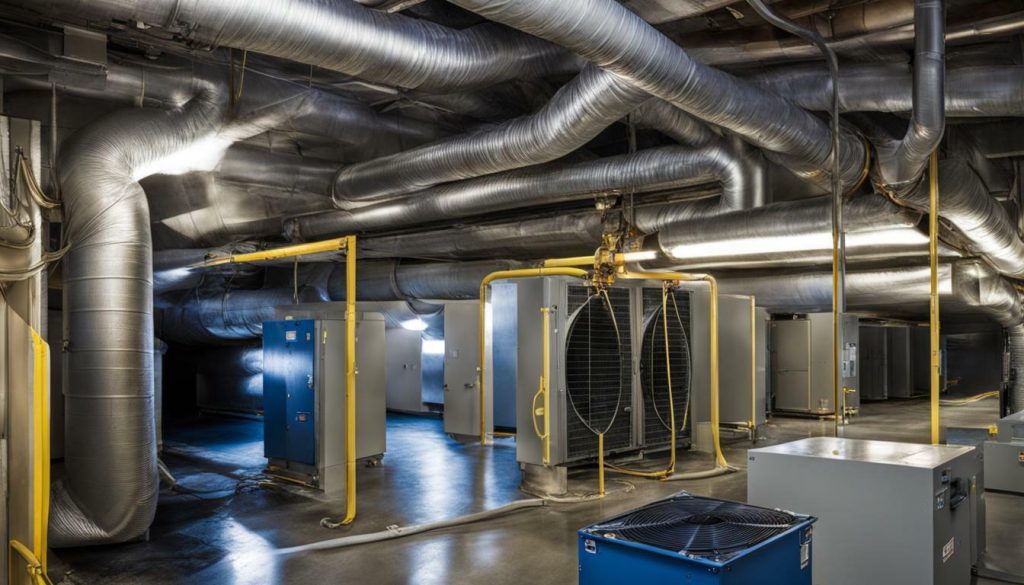
Properly sized and installed ductwork plays a critical role in the overall performance and efficiency of an HVAC system. It ensures that conditioned air reaches every corner of the building, creating a comfortable and consistent indoor environment. By avoiding the common mistake of undersized ductwork, homeowners and building managers can maximize the benefits of their HVAC installation and prevent potential problems down the line.
Unsuitable Overflow Drain Installation
Improper installation of overflow drains is a common mistake in HVAC projects, often leading to water leakages and subsequent damage to the system. When overflow drains are not installed correctly, excess condensation and drainage may build up, causing water to overflow and potentially seep into the surrounding area. This can lead to water damage, mold growth, and system malfunctions.
To avoid this issue, it is important to follow HVAC project best practices when installing overflow drains. Ensuring proper placement and securing of the drain pipe is crucial to prevent leaks. Additionally, using the correct size and type of drain pipe is essential for effective drainage without any blockages. Regular inspection and maintenance of the drain system can also help identify and address any potential problems before they worsen.
| Common Mistakes in Overflow Drain Installation | Best Practices for Overflow Drain Installation |
|---|---|
| Using incorrect or inadequate drain pipe material | Choose the appropriate drain pipe material for efficient water flow |
| Improperly securing the drain pipe | Ensure the drain pipe is firmly secured to prevent leaks |
| Incorrect placement of the overflow drain | Place the drain in a suitable location to collect and divert excess water |
By following these best practices and engaging the services of a professional HVAC contractor, you can avoid the pitfalls of unsuitable overflow drain installation and safeguard your system from water damage and other related issues.

Incorrect Refrigerant Usage
Incorrect refrigerant usage is a significant concern in failed HVAC projects, as it can lead to inadequate cooling or heating capabilities, reduced efficiency, and potential damage to components. Using the wrong type or amount of refrigerant can result in system malfunctions, poor temperature control, and increased energy consumption. It is crucial for HVAC contractors to follow best practices when it comes to refrigerant selection and handling.
One common mistake is using refrigerant that is incompatible with the system or not suited for the specific application. This can result in improper heat transfer and a mismatch between the refrigerant and the system’s components. It is important to consult the manufacturer’s guidelines and industry standards to ensure the correct refrigerant is used.
Another issue is improper refrigerant charging, which involves either undercharging or overcharging the system. Undercharging can lead to poor cooling or heating performance, while overcharging can cause excessive pressure and potential damage to the compressor. Accurate refrigerant charging is essential for optimal system operation and efficiency.
| Common Refrigerant Usage Mistakes | Impact on HVAC Systems |
|---|---|
| Using the wrong type of refrigerant | System malfunctions, poor temperature control |
| Using the incorrect amount of refrigerant | Inadequate cooling or heating capabilities |
| Improper refrigerant charging | Poor performance, reduced efficiency, potential compressor damage |
To avoid these refrigerant usage mistakes, it is essential to hire a professional HVAC contractor who is knowledgeable about industry best practices. They will have the expertise to select the appropriate refrigerant for your system and ensure it is charged correctly. Regular maintenance and monitoring can also help detect any refrigerant-related issues early on, preventing major problems down the line.
By understanding the importance of correct refrigerant usage and partnering with a reputable HVAC contractor, homeowners and building managers can avoid the pitfalls of improper refrigerant handling and ensure the long-term performance and energy efficiency of their HVAC systems.
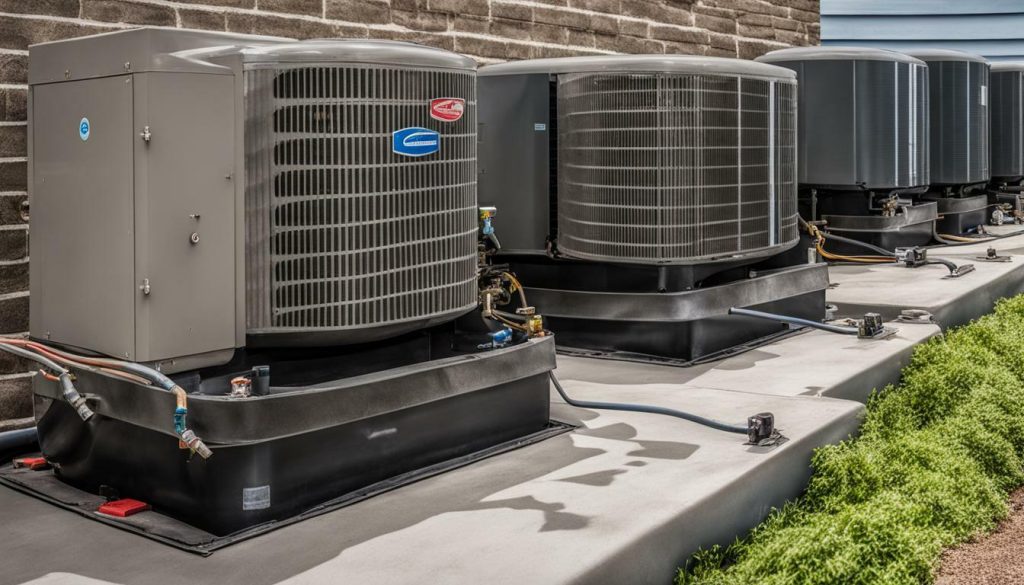
Improper Exhaust Installation and Its Impact on HVAC Systems
Improper exhaust installation is a common issue in failed HVAC projects, often resulting in poor air quality and increased energy consumption. When the exhaust system is not installed correctly, it can fail to remove harmful pollutants, such as carbon monoxide, from your home or building. This can lead to serious health risks, particularly for those with respiratory conditions or compromised immune systems.
In addition to compromising indoor air quality, improper exhaust installation can also contribute to higher energy bills. When the exhaust system is not properly designed or sealed, it can cause air leaks, leading to the loss of conditioned air. This not only wastes energy but also puts additional strain on your HVAC system, reducing its overall efficiency and lifespan.
To ensure proper exhaust installation and avoid these common HVAC project mistakes, it is essential to work with a reputable HVAC contractor who understands the importance of correct system design and installation practices. They will ensure that the exhaust system is appropriately sized, properly sealed, and in compliance with all relevant codes and regulations. Regular maintenance and monitoring of the exhaust system are also crucial to detect any potential issues early on and prevent further damage.

With proper exhaust installation, your HVAC system can operate more efficiently, maintain better indoor air quality, and save you money in the long run. By investing in the expertise of a professional HVAC contractor and prioritizing regular maintenance, you can avoid these common pitfalls and enjoy a well-functioning, energy-efficient HVAC system for years to come.
Choosing a Reputable HVAC Contractor
Choosing a reputable HVAC contractor is crucial for the success of your HVAC installation project, as their expertise and industry knowledge greatly influence the outcome. A licensed and experienced contractor will have the necessary qualifications and certifications to ensure that your project is carried out with precision and adherence to industry standards. With their skills and experience, they can help you avoid common mistakes that often lead to failed HVAC projects.
A reputable HVAC contractor will conduct a thorough assessment of your space, taking into consideration factors such as square footage, insulation, and airflow requirements. They will accurately size the HVAC units and ductwork to ensure optimal performance and energy efficiency. This attention to detail is essential to prevent issues such as inadequate cooling/heating, excessive energy consumption, and uncomfortable indoor environments.
When selecting a contractor, look for references, testimonials, and reviews from previous clients. This will give you insights into their professionalism, reliability, and the quality of their work. Additionally, choose a contractor who offers ongoing support and maintenance services. Regular maintenance and monitoring can help identify potential problems early on, preventing major issues and prolonging the lifespan of your HVAC system.
Benefits of Choosing a Reputable Contractor:
- Expertise and industry knowledge
- Accurate sizing of HVAC units and ductwork
- High-quality installation
- Prevention of common mistakes
- Professionalism and reliability
- Ongoing support and maintenance services
| Issue | Impact |
|---|---|
| Inadequate cooling/heating | Uncomfortable indoor environment |
| Excessive energy consumption | High utility bills |
| Shortened lifespan of HVAC system | Costly repairs and replacements |
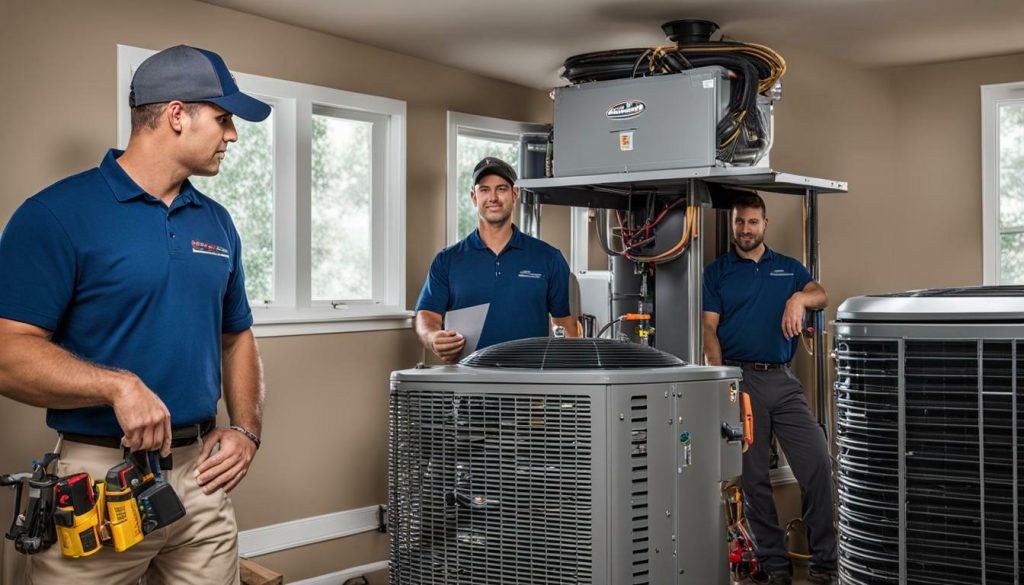
By choosing a reputable HVAC contractor, you can have peace of mind knowing that your installation project is in capable hands. Their expertise and attention to detail will ensure that your HVAC system operates efficiently, providing maximum comfort and energy savings for years to come.
Regular Maintenance and Monitoring
Regular maintenance and monitoring are essential practices to prevent HVAC project failures and ensure the efficient functioning of your system. By implementing these proactive measures, you can identify and address potential issues before they escalate into costly and inconvenient problems.
One of the key aspects of regular HVAC maintenance is scheduling annual tune-ups with a professional technician. During these visits, the technician will inspect and clean all components of your system, including the condenser coils, air filters, and fan blades. They will also check for any refrigerant leaks, test the electrical connections, and calibrate the thermostat to ensure accurate temperature control.
Additionally, it is crucial to regularly monitor your HVAC system’s performance. Keep an eye out for any signs of trouble, such as unusual noises, inconsistent heating or cooling, or a sudden increase in energy consumption. These could indicate underlying issues that require immediate attention. Creating a maintenance checklist and logging regular system readings will help you track changes and detect any abnormalities over time.
Moreover, it is important to establish a preventive maintenance schedule for other HVAC system components, such as the ductwork and exhaust vents. Inspecting and cleaning ducts regularly not only improves airflow and indoor air quality but also prevents potential blockages or leaks that can compromise system efficiency. Similarly, ensuring proper exhaust ventilation is essential to prevent the buildup of moisture, mold, and stale air.
| Benefits of Regular Maintenance and Monitoring |
|---|
| 1. Enhanced energy efficiency |
| 2. Extended system lifespan |
| 3. Improved indoor air quality |
| 4. Reduced risk of costly repairs |
By prioritizing regular maintenance and monitoring, you can optimize the performance of your HVAC system, minimize energy waste, and potentially save money on utility bills. Additionally, these practices contribute to a healthier indoor environment and ensure the longevity of your HVAC investment.
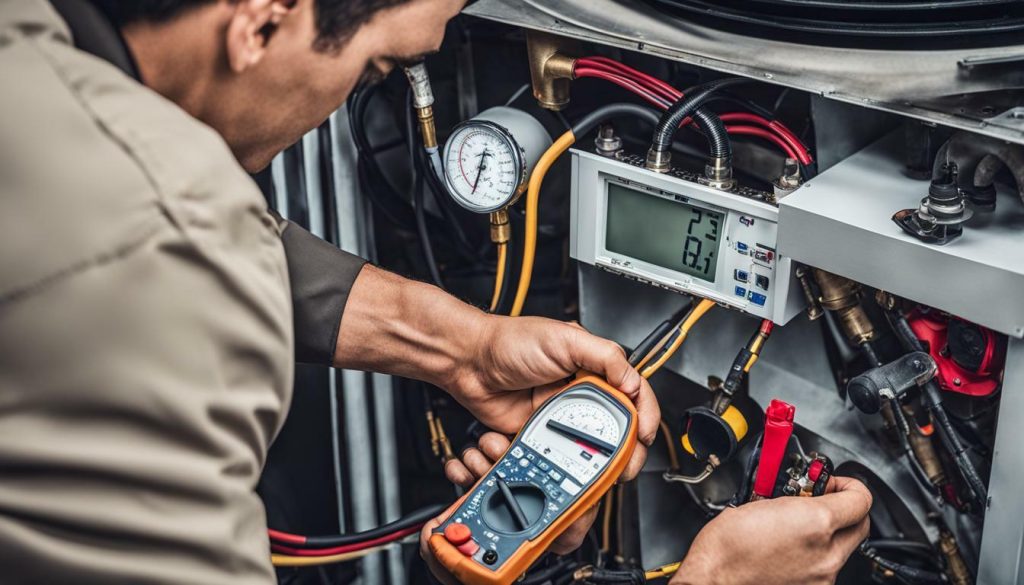
Signs of Faulty Installation
Detecting signs of faulty HVAC installation is crucial to address potential issues early on and avoid long-term problems that could impact your comfort and energy efficiency. By being aware of these signs, you can take the necessary steps to rectify any installation errors and ensure your HVAC system operates at its best. Here are some common indicators that your HVAC installation may have been improperly done:
- Leaking water: If you notice water pooling around your indoor unit or dripping from the system, it could be a sign of improper installation. Leaks can lead to water damage and mold growth, compromising both your system’s functionality and indoor air quality.
- Electrical issues: Frequent circuit breaker trips, blown fuses, or flickering lights can indicate electrical problems related to your HVAC installation. These issues may stem from improper wiring or inadequate electrical capacity, which can pose safety risks if not addressed.
- Inadequate airflow: Insufficient airflow from your vents or uneven distribution of air throughout your space may suggest problems with your HVAC installation. This could be due to poorly designed ductwork, incorrect fan settings, or blocked air filters.
- Excessive noise: Unusual or loud noises coming from your HVAC system, such as rattling, grinding, or squealing, should not be ignored. These noises can be a sign of loose components, damaged parts, or poor installation practices.
- Hot and cold spots: If you experience significant temperature discrepancies in different areas of your home or building, it could indicate improper HVAC installation. Inefficient ductwork design or incorrect equipment sizing can result in uneven heating or cooling, leaving some areas uncomfortable.
It is important to address these signs promptly by contacting a professional HVAC contractor. They will be able to assess the installation and identify any underlying issues that need to be resolved. By taking action, you can avoid long-term problems and ensure your HVAC system operates efficiently, providing optimal comfort and energy efficiency.
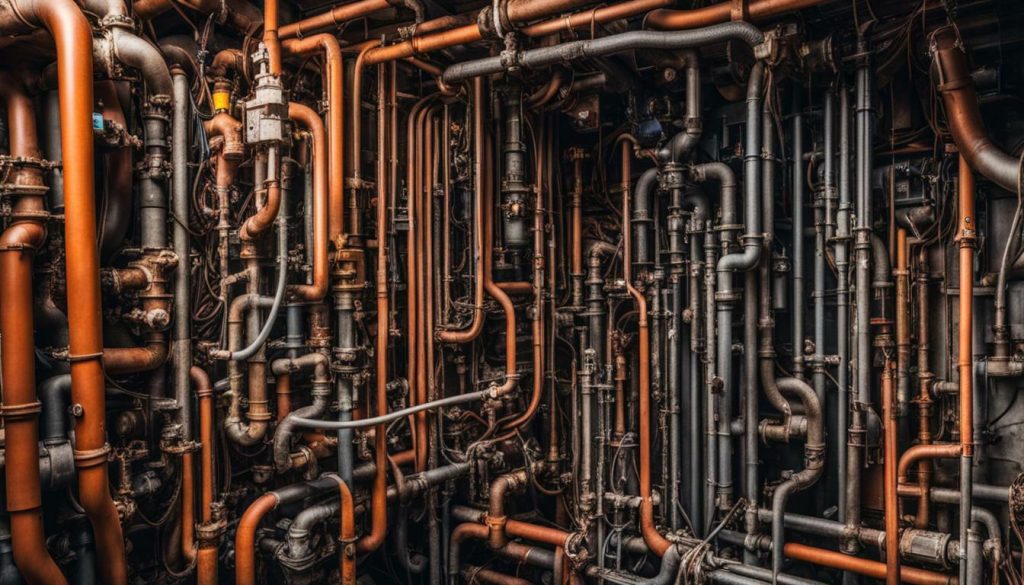
| Signs of Faulty Installation | Causes | Impact |
|---|---|---|
| Leaking water | Improper drainage system, faulty connections | Potential water damage, mold growth, reduced system efficiency |
| Electrical issues | Improper wiring, inadequate electrical capacity | Safety hazards, system malfunctions |
| Inadequate airflow | Poor ductwork design, blocked air filters | Poor indoor air quality, inefficient heating/cooling |
| Excessive noise | Loose components, damaged parts | Disruption, potential component failure |
| Hot and cold spots | Inefficient ductwork design, incorrect equipment sizing | Uneven heating/cooling, discomfort |
Hiring a Professional HVAC Contractor
Hiring a professional HVAC contractor is a proactive step to avoid the pitfalls of failed HVAC projects and guarantee the successful installation of your system. When it comes to something as important as your heating and cooling system, you want to ensure that it is installed correctly the first time. By hiring a qualified professional, you can have peace of mind knowing that your HVAC project is in capable hands.
One of the main reasons for failed HVAC projects is the lack of knowledge and experience of the installer. A professional HVAC contractor has the necessary certifications and expertise to handle the complexities of HVAC installations. They are trained to properly size units, design and install ductwork, select the appropriate refrigerant, and ensure proper exhaust installation. With their knowledge and attention to detail, they can prevent common installation problems that can lead to system inefficiencies and failures.
Another benefit of hiring a professional contractor is their access to high-quality materials and equipment. They have established relationships with reputable suppliers and manufacturers, allowing them to source the best products for your HVAC system. This means that your system will be equipped with durable, energy-efficient components that will provide optimal comfort and performance for years to come.
| Benefits of Hiring a Professional HVAC Contractor |
|---|
| Access to certified and experienced professionals |
| Knowledgeable about proper sizing and installation techniques |
| Access to high-quality materials and equipment |
| Compliance with industry standards and codes |
| Guarantee on workmanship and equipment |
Lastly, hiring a professional HVAC contractor ensures compliance with industry standards and codes. They are familiar with local regulations and will ensure that your installation meets all requirements. This can help you avoid costly fines and legal issues down the line. Additionally, reputable contractors often provide guarantees on their workmanship and equipment, giving you added protection and peace of mind.
When it comes to HVAC installation, cutting corners or attempting a DIY approach can lead to costly mistakes and system failures. By hiring a professional HVAC contractor, you can avoid these risks and ensure a smooth, successful installation. Invest in the expertise of a qualified professional to avoid the headaches of failed projects and enjoy the benefits of a properly installed and functioning HVAC system.
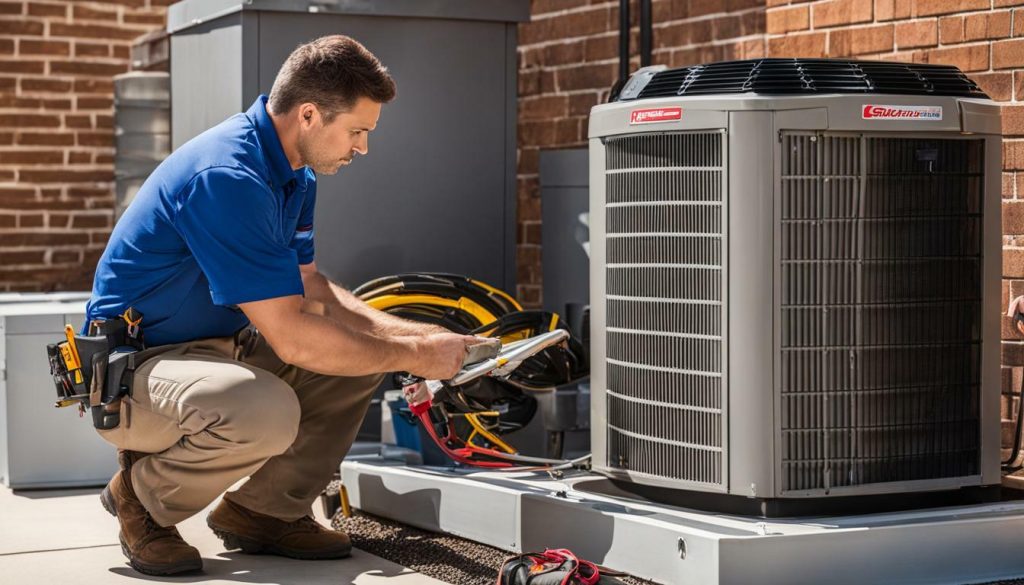
Conclusion
By understanding the reasons behind failed HVAC projects and implementing best practices, you can ensure the success of your own installation projects, avoiding common pitfalls and achieving efficient and reliable HVAC systems. Improper installation can lead to a range of problems, including poor performance, high energy bills, and discomfort. Some common HVAC installation problems include incorrectly sized units, undersized ductwork, unsuitable overflow drain installation, incorrect refrigerant usage, and improper exhaust.
To avoid these issues, it is crucial to choose a reputable HVAC contractor with the necessary certifications and experience. A professional contractor will ensure accurate sizing of units and ductwork, proper installation of overflow drains, and correct refrigerant usage. They will also take into account the importance of proper exhaust to ensure adequate ventilation and maintain indoor air quality.
In addition to hiring a professional contractor, regular maintenance and monitoring are key to ensuring the long-term optimal performance of HVAC systems. Regular inspections and maintenance can detect and address any issues before they escalate, preventing potential failures. It is recommended to schedule routine maintenance appointments to keep your HVAC system running smoothly.
Identifying signs of faulty installation is essential for timely intervention. Keep an eye out for water leaks, electrical issues, inadequate airflow, excessive noise, and hot and cold spots. If you notice any of these signs, it is important to address them promptly to avoid further damage and improve the efficiency of your HVAC system.
By following these best practices, you can avoid the frustrations and setbacks associated with failed HVAC projects. Taking the time to select a reputable HVAC contractor, investing in regular maintenance, and being vigilant for signs of faulty installation will ensure that your HVAC system operates efficiently, providing comfort and energy savings for years to come.
FAQ
Why is understanding why HVAC installation projects fail important?
Understanding why HVAC installation projects fail is crucial for homeowners and building managers to avoid common problems and ensure optimal performance and energy efficiency.
What are some common HVAC installation problems?
Some common HVAC installation problems include incorrectly sized units, undersized ductwork, unsuitable overflow drain installation, incorrect refrigerant usage, and improper exhaust.
What are the consequences of improperly sized HVAC units?
Improperly sized HVAC units can lead to poor performance, high energy bills, and discomfort.
How does undersized ductwork impact HVAC installations?
Undersized ductwork can restrict airflow, reduce system efficiency, and cause uneven heating or cooling.
What problems can arise from unsuitable overflow drain installation?
Improper overflow drain installation can cause water damage, system malfunctions, and potential hazards.
What are the consequences of using incorrect refrigerant in HVAC installations?
Using incorrect refrigerant can lead to system inefficiency, reduced performance, and potential damage to the HVAC system.
How does improper exhaust installation affect HVAC systems?
Improper exhaust installation can result in inadequate ventilation, increased energy consumption, and reduced indoor air quality.
What should homeowners and building managers consider when choosing an HVAC contractor?
It is important to choose a reputable HVAC contractor with certifications and experience to ensure a successful installation project.
What role does regular maintenance and monitoring play in HVAC installations?
Regular maintenance and monitoring are key to ensuring the proper functioning of HVAC systems and preventing project failures.
What are the signs of faulty HVAC installation?
Signs of faulty HVAC installation include leaking water, electrical issues, inadequate airflow, excessive noise, and hot and cold spots.
Why is it recommended to hire a professional HVAC contractor for installation projects?
Hiring a professional HVAC contractor can help avoid installation errors and ensure optimal performance and energy efficiency.

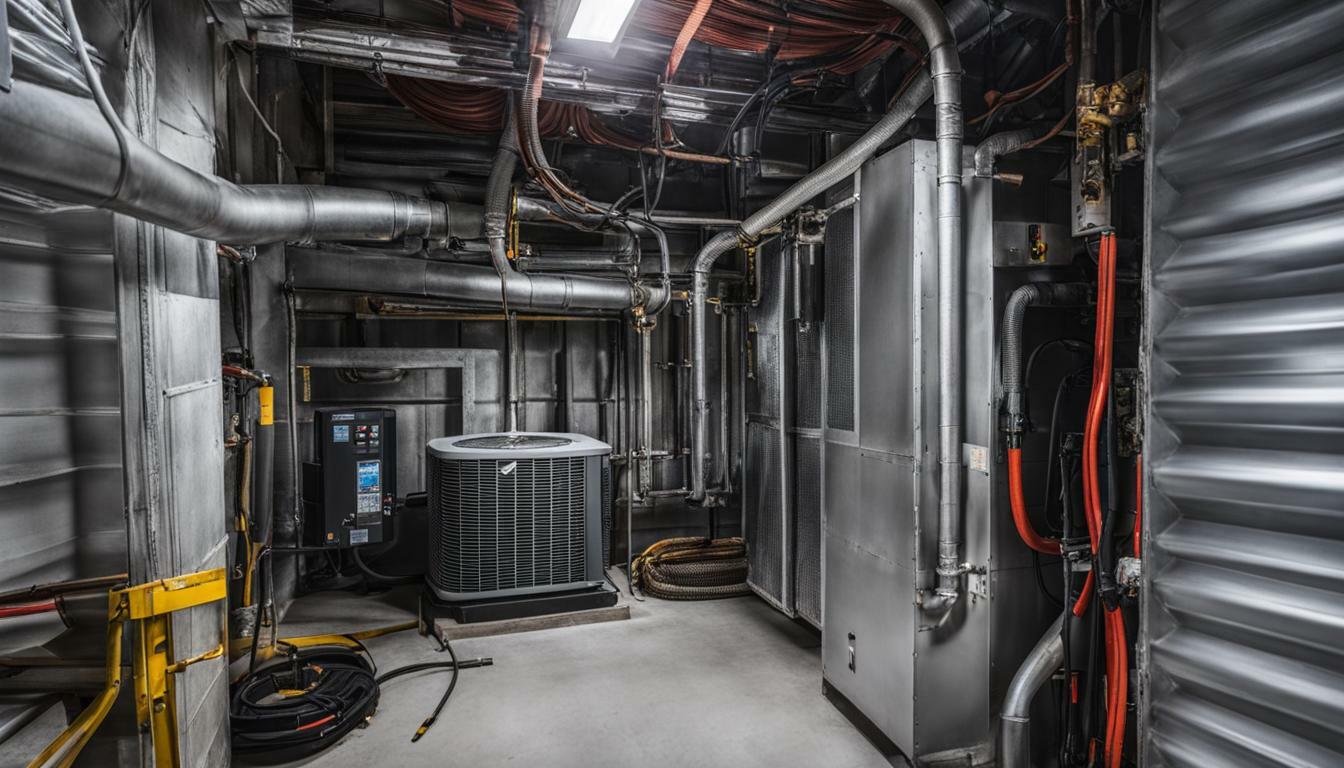



0 Comments